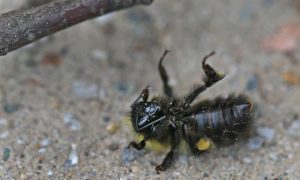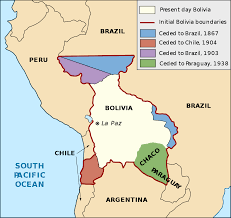On September 8, 2019, the remains of an estimated four individuals were found buried under a bathroom in the house of the former Paraguayan rightwing dictator Alfredo Stroessner. Local authorities subsequently launched an investigation to verify whether the remains belonged to victims of the Stroessner regime –a regime that committed multiple crimes against humanity. One of the primary goals of this investigation, asserted María Stella Cáceres, director of the Museum of Memories, would be to advance efforts to identify and return the remains of the victims of Stroessner’s dictatorship.

The article provides information on the Stroessner regime that is helpful in understanding the importance of the finding of the bone remains and the frustration of some Paraguayan groups by the government’s insufficient involvement in uncovering the crimes of the dictatorship. For instance, it addresses the regime’s “routine use of persecution, kidnap and torture” against opposition groups and the LGBT community. The article further highlights the horrors of the regime by stating that “at least 423 people were executed or ‘disappeared’, 18,722 tortured and 3,470 forced into exile.” Yet, as the article points out, only 37 bodies of those murdered under Stroessner have been discovered to date. This has led activist groups across the country to denounce the Paraguay government’s failure to adequately fund investigative work.

Through interviews of Paraguayan activists, the article portrays the Paraguayan government as passive and somewhat uninterested in uncovering the crimes that were perpetrated against its people. On the other hand, it highlights the involvement of independent groups and institutions in denouncing the Stroessner regime’s crimes and giving the victims’ families closure by returning the remains of their lost ones. It also seems to be written from a foreigner’s perspective, or is at least intended to a foreign audience. This is evident by the author’s emphasis on clarifying that families digging for hidden treasures in places where they were “squatting” (which is how the human remains were discovered) is common practice in Paraguay.
This article relates to our class themes in that addresses the dictatorship of a Latin American leader, which speaks to our discussions of Diáz’s regime. The persecution of indigenous people under Stroessner, especially, speaks to our extensive discussions of the rights and characteristics of indigenous populations in the context of the Mexican Revolution. Finally, the fact that this article addresses how the consequences of the Stroessner dictatorship persist today is reminiscent of our future discussions of the Zapatista Army of National Liberation, whose roots can be traced by to the Diáz regime.
Source: Costa, William. “Paraguay Investigates Human Remains Found on Ex-dictator’s Former Property.” The Guardian. Sep 8, 2019. https://www.theguardian.com/world/2019/sep/08/paraguay-alfredo-stroessner-human-remains.










